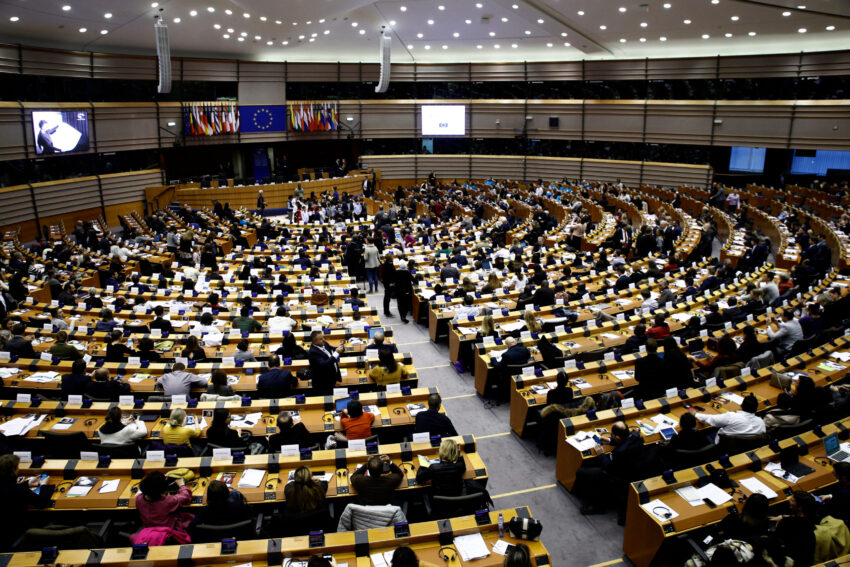AG INSIGHT | 29/01/2018
Encouraging the circular economy through public procurement

Dr Mervyn Jones, Director at Sustainable Global Resources, reviews the important role of public procurement in driving the EU’s circular economy.
Policy plays a crucial role in ensuring the €1.8 trillion or so of circular benefits are realised. The Rebus project, led by WRAP, the Dutch Rijkswaterstaat and the Aldersgate Group among others, has demonstrated that policy to drive the circular economy must be translated into practice. This requires a collaborative approach between government, the supply chain and its customers in order to overcome the barriers and reap the rewards. The evidence for this is no more so than in public procurement.
Every year, over 250,000 public authorities in the EU spend around €2 trillion, 14% of GDP, purchasing goods and services. This spend represents key markets in many sectors like construction – regeneration, maintenance and refurbishment and infrastructure; office furniture, ICT and telecommunications; catering and corporate clothing. The public sector is therefore uniquely placed to encourage resource productivity through its procurement practices, and can use this procurement to deliver both economic and environmental gains. This win:win provides an extremely good return on investment for public sector bodies as well as directly and indirectly encouraging its private sector supply to improve its own performance.
So how have public sector bodies started to initiate these changes? The Dutch have introduced policies, as have many EU countries, to support the circular economy through public procurement. Crucially, they have mandated public sector bodies to take action, most notably by creating pilot projects across a multitude of departments and categories like construction, textiles, furniture and ICT. This approach has enabled both opportunity and flexibility. The Dutch Green Deal has created a framework within which pilots can be tested and knowledge and best practices shared to collectively address the challenges to circular procurement.
What are the barriers?
The Rebus and Green Deal pilots, along with others from countries like Finland, Denmark, Sweden, Latvia and Poland, are all building a strong and consistent case for customers and suppliers adopting more circular business models. Procurement processes have been shown to facilitate this shift when proactively employed.
However, the pilots also show we now need to transition from piloting to mainstreaming circular business practices. The pilots have shown that this can prove challenging for larger businesses due to internal processes, existing business models and financing. For these businesses, the route to circular models seems to be on a product basis. Smaller businesses, SMEs, have proved to be more agile. The challenge then, especially for public procurement, is enabling the right conditions for businesses to introduce new models and products into existing markets.
New business models must also overcome risks in order to become mainstream rather than niche offerings. Product servicisation is often cited as a key circular business model. However, this needs to be effectively specified and managed in order to create the circular benefits the public sector is so keen to encourage. Servicisation can also go wrong, as shown by recent events in the UK with large businesses like Carillion.
Initiating a successful circular business model also requires all those involved in procurement to have the right information available at the right time in the procurement decision-making cycle. In other words, treating procurement as a strategic mechanism for delivering organisational objectives throughout the supply chain. It sounds simple enough but is all too often an afterthought.
Strategic procurement requires a good understanding of, and good communication with, suppliers and the market. A 2016 PwC report showed that EU procurers’ main concerns were around complexity, workload, timescales, legal challenges and lack of expertise. This is hardly conducive to embracing and mainstreaming new practices.
Strategic public procurement
Category planning can help address some of these challenges. Procuring for more circular economies is still new and there is a gap between current market availability and what the market is capable of, e.g. with encouragement or more confidence, or offering. Category planning provides a framework for market engagement and dialogue, setting ambition and targets, and working with the supply chain on delivering future as well as current needs. The Dutch Furniture Category Plan provides a good example of how setting circular ambitions alongside market dialogue can create a rapid change in product offerings.
Scaling successes from pilots requires a systematic and coordinated approach. Initiatives, like the Dutch Green Deals and the Flemish Green Deal in Belgium, not only provide useful frameworks to encourage the development of pilots, but are also building momentum and creating scale. They are crucial in facilitating capacity building, knowledge sharing, and training and enable more robust monitoring of circular policy implementation. The Flemish Green Deal, launched in June 2017, now has over 101 participating organisations, across government and business, along with 52 further supporters – federations, trade bodies etc. Cities like Aalborg, Denmark; Malmo in Sweden; and, Riga in Latvia are also showing that they also have an important role in building scale and bridging the link between consumers and business.
The REBus pilots and the lessons report has shown the important role that procurement plays in encouraging and delivering more circular economies. The crucial is taking the next step whatever part you play in the procurement cycle.
Dr Mervyn Jones is Director at Sustainable Global Resources


